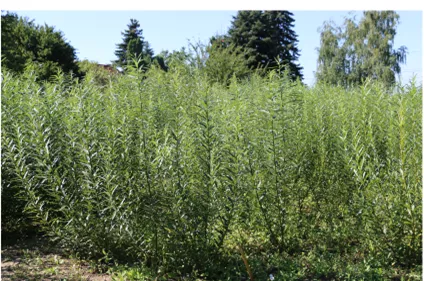Researchers led by the academic Dénes Dudits, a research professor at the ELKH Biological Research Centre in Szeged (BRC), have developed a new process for biogas production using willow green biomass. The project was implemented as a cooperation between experts of BRC, and the Department of Biotechnology, University of Szeged (SZTE), Agrár-Béta Mezőgazdasági Kft. and Kaposszekcső Agrár-Biogáz Kft., with EU funding of HUF 545 million. The researchers have further developed a long-established biotechnological process for biogas production using willow green biomass, opening up a new way to produce biogas in a more economically efficient and environmentally friendly way.
The aim of the research was to develop a new method to increase the production of green energy, which is becoming increasingly more important due to the growing demand for power, in an environmentally friendly way and to use it properly, said Zoltán Bagi, the technical leader of the project and assistant professor at the Department of Biotechnology, University of Szeged. The research has shown that, when placed in biogas reactors, willow green biomass is one of the most suitable feedstocks for biogas production, alongside conventional organic waste.
The researcher said that, when placed in fermentation tanks, almost all organic materials can be used to produce biogas – including animal manure, food by-products and waste, carcasses of dead animals and particular parts of plants. In addition, household organic waste and sewage sludge can also be used for this purpose. With the help of micro-organisms, biotechnological methods can be used to produce renewable energy, i.e. biogas, from these organic materials. He also pointed out that organic materials cannot be recycled for energy production by other processes and can give rise to a number of environmental and health problems if they are released into the environment.
In addition to producing energy, biological fermentation is also used for disposal of the original feedstock. This is due to the fact that the residual material after biodegradation can be used as biofertilizer for nutrient replenishment in agriculture, replacing the use of artificial fertilizers, which are harmful to the environment. Most of the raw materials that can be used for biogas production are considered hazardous waste. With this process, a useful product – biogas or biofertilizer – can be produced from hazardous waste, which should otherwise be treated and disposed of at very high cost, explained Kornél Kovács, professor emeritus of SZTE.
The research has increased the economic viability of biogas plants by developing fermentation technologies using willow green biomass. The experts investigated ways to improve biomass yield, salt tolerance and environmental cleaning capacity of energy willow plantations and developed innovative cultivation technologies. The effectiveness of the method was tested in a pilot experiment at the industrial-scale biogas plant in Kapossekcső.
The results of several years of breeding research carried out at the ELKH BRC Institute of Plant Biology have helped improve the fermentation raw materials based on the utilization of green biomass. As a result, novel energy willow genotypes produced by polyploidization, resulting in a doubling of the genome size, provided increased methane yields. In addition, as the chemical composition of green biomass also affects the efficiency of the fermentation process, selection is also carried out to reduce the lignin content. Crucially, the new polyploid genotypes absorb more carbon dioxide (CO2) during photosynthesis, so these plants have an additional environmental benefit when harvested every two years in the short rotation culture system.

The project was implemented within the framework of the Széchenyi 2020 program under the GINOP tender "Utilization of short-cutting rotation energy plantations with innovative biogas cofermentation and phytoremediation technologies".